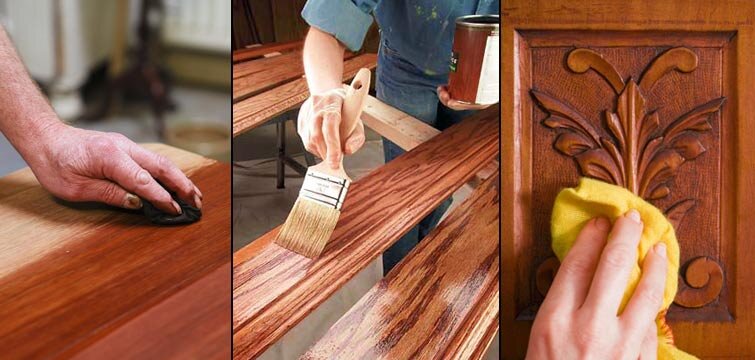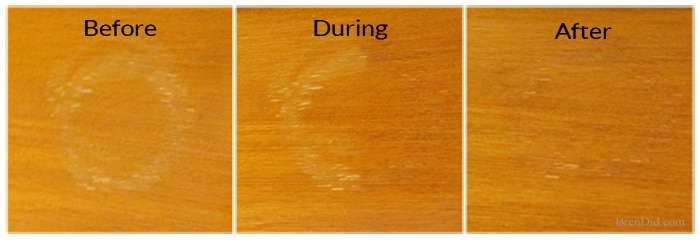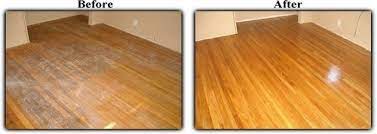Natural Wood Polish
Learning about natural wood polish and methodology!
Homemade furniture polish does wonders for your wood furniture by cleaning, moisturizing, and protecting it simultaneously. It also costs just pennies to make and doesn’t fill your home’s indoor air with aerosol fumes or chemicals you don’t recognize.

BENEFITS OF USING HOMEMADE FURNITURE POLISH
There are several reasons you should consider switching from commercial furniture polish sprays to making your own natural furniture polish.
No buildup or haze. Commercial polish contains silicone, among other ingredients, and silicone bonds with itself, so every application adds another layer which traps dust and humidity. Over time, those layers make your furniture look dull and dirty even when you’ve just polished it.
Allergy-friendly. The ingredients in homemade furniture polish don’t contain the synthetic fragrances or aerosolized ingredients of commercial sprays. Many people with allergies find their symptoms begin to clear up when they switch to homemade cleaning products like this one.
Affordable. Olive oil and vinegar are two ingredients most people have in their kitchens. Save the good olive oil for salad dressing, though: a cheap olive oil works fine in furniture polish recipes. If you decide to add lemon essential oil to your DIY furniture polish, you can pick up inexpensive bottles of it at most major retailers. (I use this brand.)
Safe around pets and kids. The ingredients in this natural furniture polish recipe are safe and non-toxic, so you don’t need to worry about using it near your kids or pets. But, if you have a puppy or other pet that likes to lick furniture, skip the essential oils since many are not pet-safe.

COMMON QUESTIONS ABOUT POLISHING WOOD FURNITURE
Below are questions that readers have asked about making and using this natural furniture polish recipe. If you don’t see your question answered below, please ask it in the comments.
How Often Should I Polish my Furniture?
There’s no firm rule about how often you should polish wood furniture, but it’s safe to do so when it begins to look dull. With commercial polishes, you shouldn’t use them every time you dust, or you’ll get buildup. With this natural homemade polish, that’s not a problem. So, you can use it every time you clean or apply it as needed to maintain the shine.
What’s the Best Fabric to Use in Polish Furniture?
Lint-free clothes work best to dust or polish furniture. Old t-shirts make great dusting and polishing rags. So do flannel baby diapers. Whatever you choose, make sure it will not leave pieces of lint all over your freshly polished furniture. You can use the same cloth several times before laundering, and just stash it with your homemade furniture polish spray for quick touchups.
Can I Use a Different Oil?
You can use several types of oil to polish your furniture naturally but avoid oils that quickly go rancid, or your home will stink. Oils you can use to polish furniture include jojoba oil, grapeseed, and food-grade mineral oil. Tung oil and walnut oil can work on teak or darker woods, but they are not pet-safe.
My Furniture Is Sticky. Will This Help?
If your wood furniture feels sticky, you should remove wax buildup from it before using furniture polish. Follow these steps;
Here are two ways to quickly and inexpensively remove the sticky wax buildup from wood furniture. Use caution and test the solution in an inconspicuous spot first. For antiques, it’s best to see a professional.
- Use a damp microfiber cloth to dust the piece first.
- Apply the spray directly to the surface and follow the grain of the wood. You may want to reapply for stubborn grime, then rub at a right angle to the grain. Use a toothbrush in crevices.
- Let it dry, then repeat if needed. In humid areas, or if you have several layers of wax buildup, you may need to repeat the process. Let the surface completely dry each time before deciding if you need to do it again.
Can I Use Apple Cider Vinegar?
You can use apple cider vinegar instead of distilled white vinegar in homemade furniture polish. Be aware, however, that ACV contains pectin, which can attract pests like ants and cockroaches. You should stick with the original recipe if such things are a problem in your area.
Can I Add Lemon Juice?
Some recipes on the internet recommend using lemon juice in homemade furniture polish in addition to vinegar, presumably because it’s acidic. In this recipe, the vinegar already provides enough acidity to remove grime. Adding more acidic ingredients like lemon juice can damage your furniture’s finish. (Lemon essential oil does not contain citric acid.)

Can I Use a Different Essential Oil?
You can use your favourite essential oil when making homemade furniture polish. But if you have pets, avoid eucalyptus, tea tree, cinnamon, orange, pennyroyal, peppermint, pine, sweet birch, wintergreen, or ylang-ylang essential oils since they are among the essential oil not safe for pets.
Can I Use This Homemade Polish on My Wood Floors?
This natural homemade furniture polish is designed strictly for use on furniture. If you use it on hard floors, it may leave them too slippery. To clean and shine hardwood floors, try this homemade floor cleaner instead.
Can I Use This on Painted Furniture?
Use this natural furniture polish on unpainted wood, with or without varnish. It’s not designed for use on painted surfaces. To clean those, use warm, soapy water and a microfiber cloth, then rinse with a fresh, damp cloth. Don’t saturate the painted wood’s surface, or you may ruin the finish. Buff dry to finish.
No comments yet. Login to start a new discussion Start a new discussion